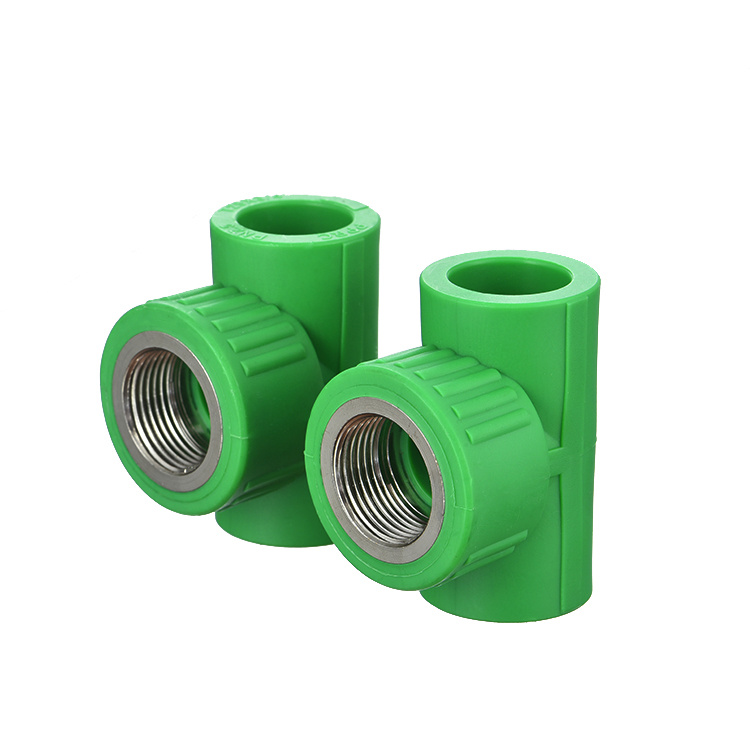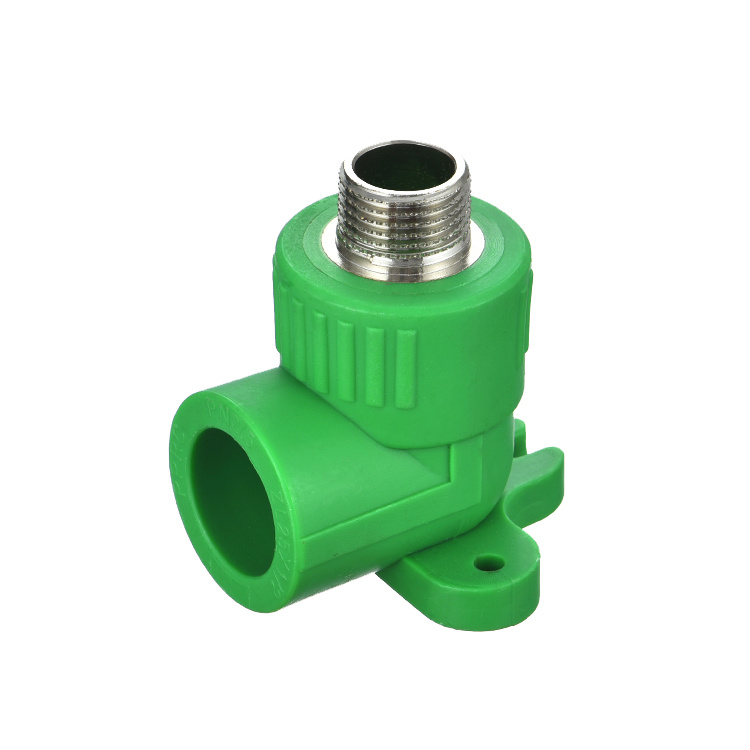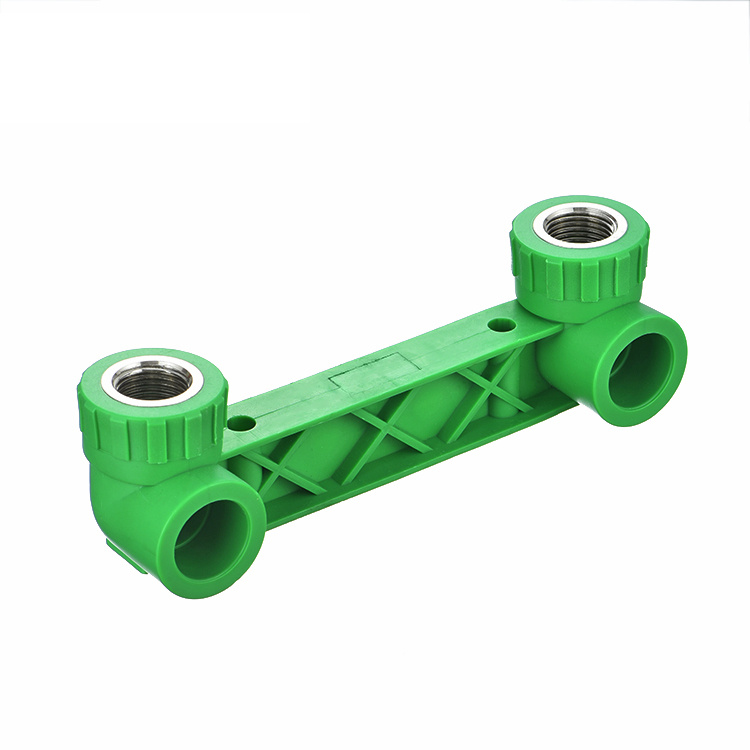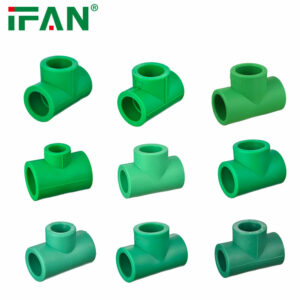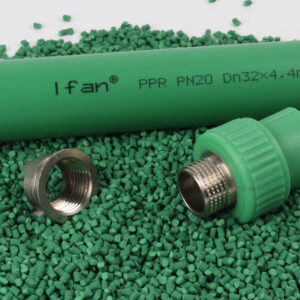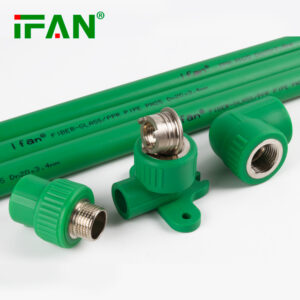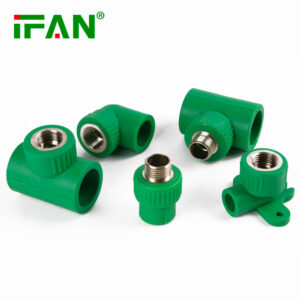Description
IFAN factory 30+ years manufacture experience support color /size customization support free sample.Welcome to consult for catalog and free samples.This is our Facebook Website:www.facebook.com,Click to watch IFAN’s product video.Compared with Tomex products, our IFAN products from quality to price are your best choice, welcome to buy!
PPR fittings (Polypropylene Random Copolymer fittings) have become increasingly popular in modern plumbing systems, especially when it comes to hot and cold water applications. With their outstanding properties, PPR fittings provide a reliable, cost-effective, and durable solution for residential and commercial plumbing needs. In this article, we’ll explore why PPR fittings are ideal for hot and cold water systems, examining their benefits, advantages, and how they perform under various conditions.
What Are PPR Fittings?
PPR fittings are made from polypropylene random copolymer, a versatile thermoplastic material known for its excellent resistance to high temperatures and pressure. These fittings are used in conjunction with PPR pipes, which are commonly employed in hot and cold water systems. The fusion process used to join PPR pipes and fittings creates a strong, leak-free bond, making them a popular choice in plumbing.
Benefits of PPR Fittings for Hot and Cold Water Systems
1. Superior Temperature Resistance
One of the primary reasons PPR fittings are ideal for hot and cold water systems is their exceptional temperature resistance. These fittings can withstand temperatures as high as 95°C (203°F) for long periods, making them suitable for hot water applications. At the same time, they perform well in cold water systems without any issues related to freezing or damage. PPR fittings maintain their structural integrity across a broad temperature range, ensuring reliable performance in both hot and cold water systems.
2. Corrosion and Chemical Resistance
Unlike metal fittings, PPR fittings are immune to corrosion, making them perfect for hot and cold water systems that may be exposed to waterborne minerals and chemicals. Over time, traditional metal pipes can develop rust and scale buildup, which can lead to leaks and clogging. PPR fittings, on the other hand, do not rust or corrode, ensuring a longer lifespan and maintaining water quality. This resistance to corrosion is particularly important in areas with hard water or aggressive water conditions.
3. Leak-Free Connections
The most effective method of connecting PPR fittings and pipes is through heat fusion. This process creates a permanent bond between the pipe and fitting, which prevents leaks. Unlike threaded or glued connections, which can deteriorate over time or under pressure, the fusion connection is seamless and reliable. This is crucial for both hot and cold water systems, as leaks in water lines can lead to significant damage and costly repairs.
4. Lightweight and Easy to Handle
PPR fittings are lightweight, making them easy to handle and install. This reduces installation time and labor costs. When compared to traditional metal fittings, PPR fittings are easier to transport and require less effort to work with, which is especially beneficial for large-scale plumbing projects. The lightweight nature of PPR fittings also reduces stress on the plumbing system, further enhancing its longevity.
5. Durability and Longevity
PPR fittings are highly durable and can last for many years, even in challenging environments. The material is resistant to impacts, chemicals, and UV radiation, which makes it ideal for both indoor and outdoor installations. When properly installed, PPR fittings can last for up to 50 years or more, providing a long-term solution for hot and cold water systems.
6. Eco-Friendly
PPR fittings are an environmentally friendly option for plumbing systems. The material used in PPR fittings is 100% recyclable, making it a sustainable choice for those looking to reduce their environmental footprint. Additionally, PPR fittings do not release harmful chemicals into the water, ensuring the water remains safe for consumption. This makes them a preferred choice for eco-conscious consumers.
7. Cost-Effective Solution
Although the initial cost of PPR fittings may be slightly higher than traditional plumbing materials, they offer significant long-term savings. Their durability, resistance to corrosion, and low maintenance requirements make them a cost-effective solution in the long run. With PPR fittings, homeowners and businesses can avoid the frequent repairs and replacements required by metal piping systems.
How PPR Fittings Perform in Hot and Cold Water Systems
PPR fittings are known for their performance in a wide range of water systems. Let’s take a closer look at how they perform under both hot and cold water conditions.
In Hot Water Systems
PPR fittings excel in hot water systems due to their ability to withstand high temperatures. They are often used in residential water heating systems, commercial hot water installations, and even industrial applications where heated water is involved. Since PPR fittings do not corrode, they maintain their integrity even when exposed to hot water for extended periods, preventing leaks and preserving water quality. Their resistance to heat also ensures they do not expand or contract under temperature fluctuations, which is crucial for maintaining a stable plumbing system.
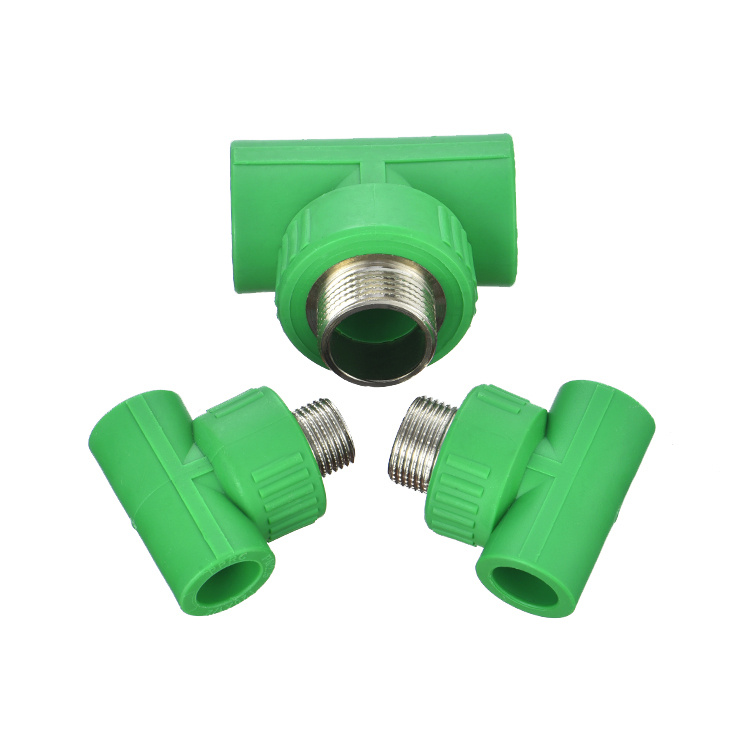
In Cold Water Systems
In cold water systems, PPR fittings offer excellent performance as well. PPR pipes and fittings maintain their strength and flexibility even in freezing temperatures, making them suitable for outdoor installations or regions with harsh winters. Unlike metal pipes, PPR fittings will not crack or break under freezing conditions, which makes them a reliable choice for cold water distribution in both residential and commercial settings.
Installation of PPR Fittings
The installation process of PPR fittings is relatively straightforward, thanks to the fusion process. Here’s a quick overview of how PPR fittings are installed:
1. Cut the PPR Pipe: Use a pipe cutter to cut the PPR pipe to the required length, ensuring a clean and straight cut.
2. Deburr the Pipe: Remove any burrs or sharp edges from the pipe using a deburring tool to ensure a smooth fit with the fitting.
3. Heat the Pipe and Fitting: Use a fusion tool to heat both the pipe and the fitting to the required temperature. This process usually takes a few seconds.
4. Join the Pipe and Fitting: Once heated, quickly push the pipe into the fitting, ensuring it is aligned properly. Hold the pipe and fitting together until they cool and form a secure, leak-proof bond.
The fusion process ensures that the connection between the pipe and fitting is both durable and leak-free, providing long-lasting performance in both hot and cold water systems.
Common Applications of PPR Fittings in Hot and Cold Water Systems
PPR fittings are commonly used in a variety of plumbing applications, including:
– Residential Plumbing: PPR fittings are used in home plumbing systems for both hot and cold water supply, including kitchens, bathrooms, and laundry areas.
– Commercial Plumbing: PPR fittings are ideal for commercial buildings, including offices, hotels, and restaurants, where both hot and cold water systems are required.
– Industrial Plumbing: PPR fittings are used in industrial applications, such as factories and manufacturing plants, where high-temperature water or chemicals may be involved.
Conclusion
PPR fittings are an ideal choice for hot and cold water systems due to their superior temperature resistance, durability, corrosion resistance, and cost-effectiveness. They provide a reliable, long-lasting solution for plumbing systems, making them a preferred option for both residential and commercial applications. With their eco-friendly properties and easy installation process, PPR fittings offer a practical and sustainable solution for modern plumbing needs.
FAQs
1. What is the maximum temperature PPR fittings can withstand?
PPR fittings can withstand temperatures up to 95°C (203°F), making them suitable for both hot and cold water systems.
2. Can PPR fittings be used for industrial applications?
Yes, PPR fittings are used in industrial applications, particularly where high-temperature water or chemicals are involved.
3. Are PPR fittings resistant to corrosion?
Yes, PPR fittings are highly resistant to corrosion, unlike metal fittings, which can rust and degrade over time.
4. How long do PPR fittings last
PPR fittings are designed to last for 50 years or more when properly installed, making them a durable and long-term solution for plumbing systems.
5. Are PPR fittings environmentally friendly?
Yes, PPR fittings are 100% recyclable, making them an environmentally friendly option for plumbing systems.
Related products
-
PPR Fittings
Green PPR Plastic Material Fittings
-
PPR Fittings
Green PPR Plastic Fittings


